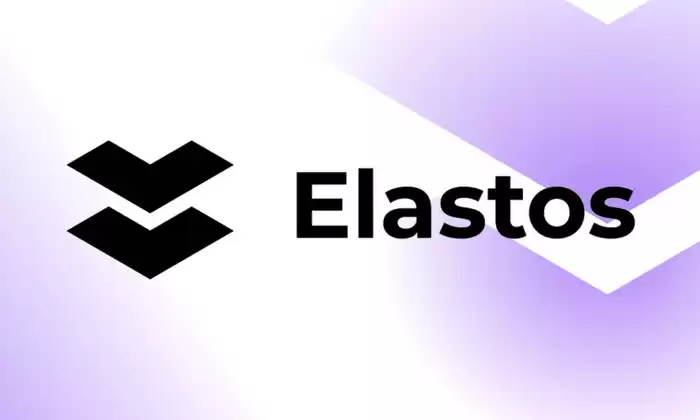-
 Bitcoin
Bitcoin $117700
-0.03% -
 Ethereum
Ethereum $3805
0.49% -
 XRP
XRP $3.098
-1.00% -
 Tether USDt
Tether USDt $1.000
0.03% -
 BNB
BNB $792.8
-1.72% -
 Solana
Solana $177.9
-1.95% -
 USDC
USDC $1.000
0.02% -
 Dogecoin
Dogecoin $0.2202
-1.55% -
 TRON
TRON $0.3278
-2.92% -
 Cardano
Cardano $0.7641
-2.43% -
 Hyperliquid
Hyperliquid $42.21
-2.68% -
 Sui
Sui $3.758
-1.58% -
 Stellar
Stellar $0.4080
-3.21% -
 Chainlink
Chainlink $17.75
-0.33% -
 Bitcoin Cash
Bitcoin Cash $591.8
4.96% -
 Hedera
Hedera $0.2561
-3.09% -
 Avalanche
Avalanche $23.34
-4.24% -
 Litecoin
Litecoin $110.7
1.96% -
 UNUS SED LEO
UNUS SED LEO $8.956
-0.01% -
 Toncoin
Toncoin $3.410
0.79% -
 Ethena USDe
Ethena USDe $1.001
0.03% -
 Shiba Inu
Shiba Inu $0.00001288
-1.82% -
 Uniswap
Uniswap $10.07
-2.06% -
 Polkadot
Polkadot $3.807
-2.27% -
 Monero
Monero $308.2
-2.15% -
 Dai
Dai $1.000
0.03% -
 Bitget Token
Bitget Token $4.521
-0.30% -
 Pepe
Pepe $0.00001134
-1.52% -
 Cronos
Cronos $0.1457
0.65% -
 Aave
Aave $274.9
-2.47%
How to get Elastos (ELA) coins
Purchasing ELA from reputable cryptocurrency exchanges like Binance and Huobi remains a convenient option for acquiring the native cryptocurrency of the Elastos ecosystem.
Nov 29, 2024 at 12:48 pm

How to Get Elastos (ELA) Coins
Elastos (ELA) is a decentralized, open-source blockchain platform for smart contracts and distributed applications. ELA coins are the native cryptocurrency of the Elastos ecosystem. Here's a comprehensive guide on how to get ELA coins:
1. Buy ELA from a Cryptocurrency Exchange
- Step 1: Choose a Cryptocurrency Exchange
Select a reputable cryptocurrency exchange that supports trading in ELA. Consider factors such as security measures, trading fees, and availability of ELA trading pairs. Some popular exchanges include Binance, Huobi, and OKEx.
- Step 2: Create an Exchange Account
Register for an account on the chosen exchange and complete the identity verification process (Know-Your-Customer, KYC). This usually involves providing personal information, uploading identity documents, and setting up two-factor authentication.
- Step 3: Fund Your Exchange Account
Transfer funds into your exchange account through available payment methods such as bank transfers, credit/debit cards, or other supported cryptocurrencies.
- Step 4: Buy ELA Coins
Navigate to the ELA trading page on the exchange, enter the desired amount or price, and place a buy order. Choose from various order types such as market orders for immediate execution or limit orders to purchase ELA at a specific price.
2. Mine ELA Coins
- Step 1: Set Up a Mining Rig
Acquire specialized hardware, such as an Application-Specific Integrated Circuit (ASIC) miner or a graphics processing unit (GPU), to mine ELA coins. ASIC miners are typically more efficient for large-scale mining operations.
- Step 2: Configure Mining Software
Install appropriate mining software on your mining rig. This software connects you to the Elastos blockchain network and handles the mining process. Examples of popular mining software include CCminer and Claymore's Dual Miner.
- Step 3: Join a Mining Pool
To enhance your chances of earning ELA coins, consider joining a mining pool. A mining pool combines the resources of multiple miners to increase the probability of finding blocks and distributing the rewards.
3. Earn ELA Coins as Rewards
- Step 1: Participate in Bounties and Programs
Elastos often conducts bounties and programs where users can earn ELA coins by completing specific tasks, contributing to the ecosystem, or promoting the platform. These activities may involve writing technical articles, creating dApps, or organizing events.
- Step 2: Stake Your ELA Coins
Staking involves locking up your ELA coins in a cryptocurrency wallet or on the Elastos blockchain to support the network and earn rewards. Staking contributes to the security and stability of the Elastos ecosystem.
- Step 3: Run a Masternode
Masternode operators provide a critical service to the Elastos network by hosting full-node wallets and participating in consensus. In return for their contributions, masternode operators receive rewards in ELA coins.
4. Get ELA Coins from an Airdrop
- Step 1: Follow Elastos on Social Media
Follow Elastos' official channels on social media platforms such as Twitter, Telegram, and Discord to stay updated on potential airdrops.
- Step 2: Participate in Airdrop Events
When Elastos announces an airdrop, follow the instructions to complete any required tasks or provide necessary information to qualify for the allocation.
- Step 3: Claim Your ELA Coins
After the airdrop, visit the designated website or platform to claim your ELA coins using the wallet address you provided.
Disclaimer:info@kdj.com
The information provided is not trading advice. kdj.com does not assume any responsibility for any investments made based on the information provided in this article. Cryptocurrencies are highly volatile and it is highly recommended that you invest with caution after thorough research!
If you believe that the content used on this website infringes your copyright, please contact us immediately (info@kdj.com) and we will delete it promptly.
- XRP, AI, and Price Projections: Decoding the Crypto Future
- 2025-07-31 15:10:13
- XRP Investment: Expert Opinions and the Potential for Explosive Growth
- 2025-07-31 15:15:12
- XRP Price: Whale Buys and Token Scoops—What's Next?
- 2025-07-31 15:30:12
- Imagen Network, RLUSD Payments, and Decentralized Applications: A New Era of Web3?
- 2025-07-31 14:30:12
- Meme Coins: Buy and Hold for the Long Term? Decoding the Hype
- 2025-07-31 14:30:12
- XRP Analyst's Market Outlook: Boom or Bust in the Crypto Wild West?
- 2025-07-31 15:35:19
Related knowledge

What is Chainlink (LINK)?
Jul 22,2025 at 02:14am
Understanding Chainlink (LINK): The Decentralized Oracle NetworkChainlink is a decentralized oracle network designed to bridge the gap between blockch...

What is Avalanche (AVAX)?
Jul 22,2025 at 08:35am
What is Avalanche (AVAX)?Avalanche (AVAX) is a decentralized, open-source blockchain platform designed to support high-performance decentralized appli...

What is Polkadot (DOT)?
Jul 19,2025 at 06:35pm
Understanding the Basics of Polkadot (DOT)Polkadot (DOT) is a multi-chain network protocol designed to enable different blockchains to transfer messag...

What is Litecoin (LTC)?
Jul 23,2025 at 11:35am
Overview of Litecoin (LTC)Litecoin (LTC) is a peer-to-peer cryptocurrency that was created in 2011 by Charlie Lee, a former Google engineer. It is oft...

What is Monero (XMR)?
Jul 21,2025 at 10:07am
What is Monero (XMR)?Monero (XMR) is a decentralized cryptocurrency designed to provide enhanced privacy and anonymity for its users. Unlike Bitcoin a...

How to add indicators to Ethereum chart on TradingView?
Jul 19,2025 at 07:15am
What Is an Ethereum Chart on TradingView?The Ethereum chart on TradingView is a visual representation of the price movement of Ethereum (ETH) over a s...

What is Chainlink (LINK)?
Jul 22,2025 at 02:14am
Understanding Chainlink (LINK): The Decentralized Oracle NetworkChainlink is a decentralized oracle network designed to bridge the gap between blockch...

What is Avalanche (AVAX)?
Jul 22,2025 at 08:35am
What is Avalanche (AVAX)?Avalanche (AVAX) is a decentralized, open-source blockchain platform designed to support high-performance decentralized appli...

What is Polkadot (DOT)?
Jul 19,2025 at 06:35pm
Understanding the Basics of Polkadot (DOT)Polkadot (DOT) is a multi-chain network protocol designed to enable different blockchains to transfer messag...

What is Litecoin (LTC)?
Jul 23,2025 at 11:35am
Overview of Litecoin (LTC)Litecoin (LTC) is a peer-to-peer cryptocurrency that was created in 2011 by Charlie Lee, a former Google engineer. It is oft...

What is Monero (XMR)?
Jul 21,2025 at 10:07am
What is Monero (XMR)?Monero (XMR) is a decentralized cryptocurrency designed to provide enhanced privacy and anonymity for its users. Unlike Bitcoin a...

How to add indicators to Ethereum chart on TradingView?
Jul 19,2025 at 07:15am
What Is an Ethereum Chart on TradingView?The Ethereum chart on TradingView is a visual representation of the price movement of Ethereum (ETH) over a s...
See all articles

























































































